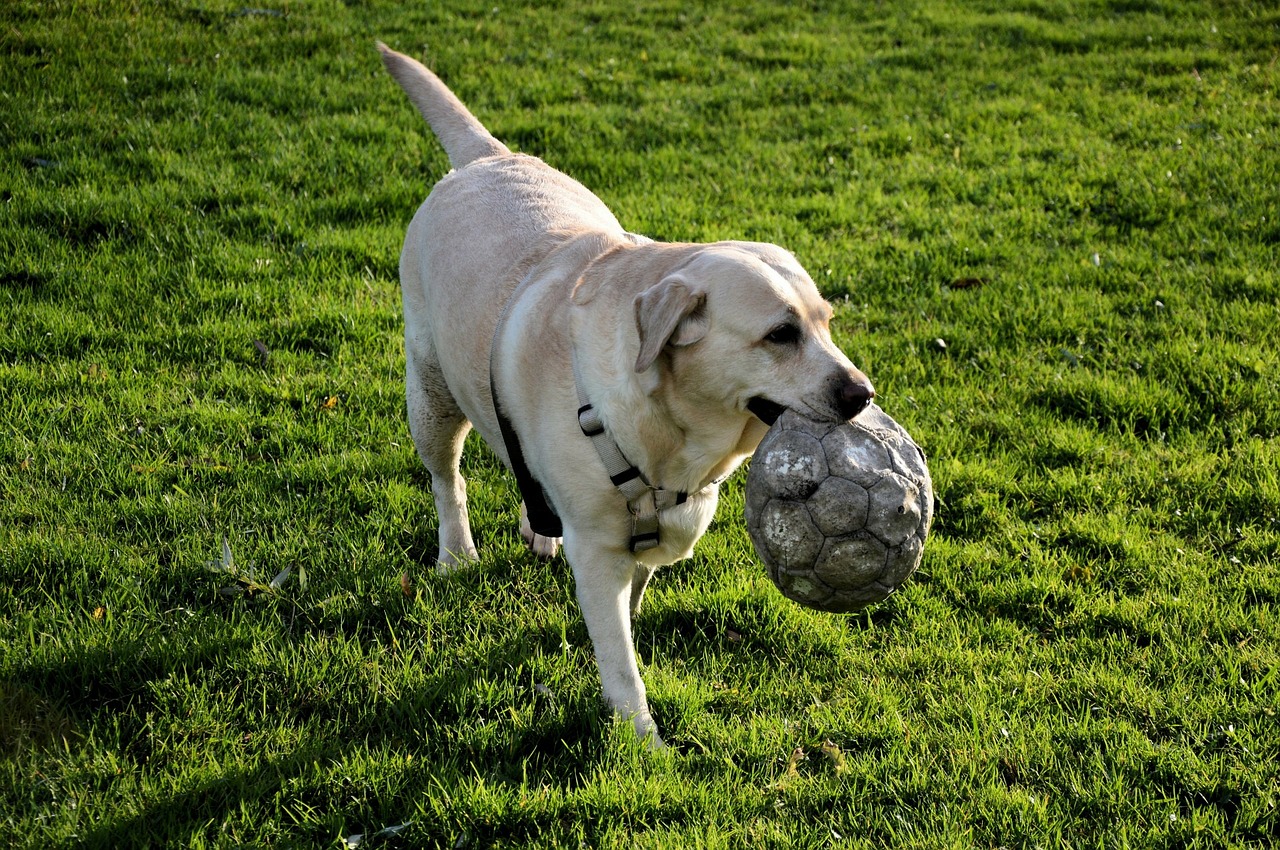- Have realistic expectations about your dog’s suitability for going to a dog park. If he isn’t polite or friendly with others, get help to change his behavior before you take him to a dog park. Dog parks are not a place to rehabilitate fearful or aggressive dogs or those that just don’t know how to play well with others.
- Before you take your dog into a dog park, spend a few minutes watching the other dogs and how they are playing and interacting with others. If the dogs seem to be too rough in their play or are intimidating other dogs, come back some other time.
- If your dog has never been around other dogs before-don’t go to a dog park until he’s had a chance to be around other dogs in other situations so your have a better idea of how he reacts to other dogs.
- If you aren’t sure how your dog will behave, don’t be ashamed or embarrassed to muzzle your dog the first few times he goes to a park. Better safe than sorry.
- Introduce your dogs to other dogs gradually-allow your dog to greet other dogs while he’s still in the separate entry area available at some parks, or let your dogs sniff around the fenced boundary.
- Be careful entering a dog park gate. Other dogs tend to crowd around to greet arriving dogs. This jostling and crowding can be quite intimidating to many dogs and may result in a skirmish, or worse.
- Do not take your small children or babies in strollers to a dog park. Dogs and children can easily frighten one another and bad things can happen to either of them in the blink of an eye.
- Supervise your dog. This is not the time for your to be distracted talking with other owners or burying yourself in a book. You must be monitoring your dog’s activities to be sure she isn’t being badly and other dogs are not behaving badly toward her. This is another reason not to take young children-you can’t adequately supervise both dogs and kids at the same time.
- Be particularly watchful of small dogs around big dogs. Don’t let big dogs frighten or threaten small dogs. Aggression between big and small dogs is especially likely to result in injuries to the small dog.
- Don’t take any toys to the park your dog is not willing to share.
- While tidbits can be a great way to reward good behavior, be careful about giving them to your dog when other dogs are nearby. If your dog can’t tolerate other dogs crowding around her wanting to share the goodies, treats may not be a good idea. If you are attempting to give treats to a crowd, requre that all dogs sit and stay while eating.
- Pick up after your dog. You don’t want to step in another dog’s poop anymore than someone else wants to step in your dog’s mess.
- Avoid grabbing your dog’s collar when your dog is playing or interacting with other dogs. Such tugging can sometimes trigger threats and aggression toward nearby dogs.
- If your dog seems to be fearful or is being “bullied” by other dogs, don’t let her stay, thinking she will “get over it”, that she will learn to “stand up for herself”. Chances are greater her behavior will get worse.
- Don’t let other dogs threaten or scare your dog. If they won’t leave, then remove your dog.
- If your dog is being a bully, being threatening or aggressive, or just seems to be overly excited, remove him from the park, either temporarily or permanently. It is not fair to put other dogs at risk. Make the safety of other dogs and people as high a priority as the safety of your own.
- Know how to break up a dog fight. Direct Stop ™, a harmless but effective citronella spray or a small hand-held air horn are your best bets. Don’t scream and yell at your dog, try to pull her off by the collar, or get in the middle of the fight as this only adds to the general arousal and greatly increases either the dogs’ or your, chances of injury.
- Always take your cell phone and have the number of the local animal control agency. Call animal control or the local police and report any aggressive person or dog that won’t leave the park. These individuals are dangerous to people and dogs.
- Be knowledgeable about dog body postures, communication signals and social behavior. You should be able to recognize stress, tension, fear, play, threats, and aggression. Know the difference between play (which can be very active and sound violent) and real threats. Know when to intervene and when to stay out of an interaction among dogs. If you feel uninformed about canine behavior, learn more before taking your dog to a park. Harm can come to your dog if you under-react as well as over-react.
- Recognize that by taking your dog to a dog park, you are accepting a degree of risk that your dog may be injured or may injure another dog. Don’t be naive and think that a dog park is a safe place for your dog to be around other dogs. This may not always be the case.
Copyright ABA, Inc., 2006. All rights reserved. May be reproduced in its entirety, without alteration, for educational purposes only. May not be included in any publication for sale without written permission from the authors. Excerpts or portions may not be reprinted without written permission from the authors.

